(This is the same content as it appears in the book).
This section underscores the simplicity of tools required to initiate a journalism program and accentuates the significance of press badges for young journalists. It also provides tips for conducting person-on-the-street (POS) interviews, emphasizing the need to be comfortable with the topic, pick the right interview subjects, and learn how to engage and follow up with interviewees.
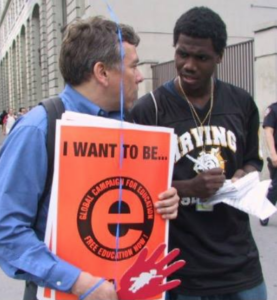 Simple Tools and Big Opportunities
Simple Tools and Big Opportunities
Children are natural-born journalists, at least when it comes to questioning: What? Why? How? An enrichment program based on teaching journalism skills to youth can help them rekindle their natural curiosity, expose them to different topics so they can find their passion, and give them the confidence to go out into the world to pursue their goals.
Equipping them doesn’t have to be complex or costly. A pen, a notebook, a camera, and a venue to publish the story are the only real tools needed to begin a journalism program. The web provides a free or inexpensive venue via a blog, a website, or any number of internet platforms. Pen and paper are negligible expenses, and most youth now have a camera and computer in their pocket through their smartphone. Yes, you can get more elaborate, but that’s a start.
The press badge serves multiple purposes. It bestows a sense of authority upon the students. It also communicates a clear intention to interview subjects: that their words may be published or broadcasted. In the U.S., such an intention garners protection under the First Amendment. This amendment safeguards the freedoms of expression and the press. As a result, journalists have a legal shield to publish their content without facing undue interference from the government.
POS interviews are the easiest stories to publish. They can often be the first assignment on which a young reporter is sent. Generally, reporters choose a topic from the day’s headlines on which to query folks on the street. The team that goes out includes a reporter, a photographer or videographer, and, initially, a veteran reporter or adult mentor.
Easy Targets
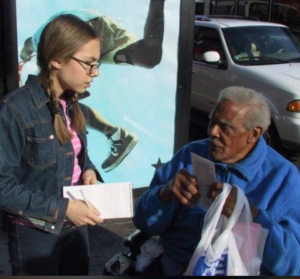
One of the primary tasks of a youth journalist is finding interview subjects. POS stories generally consist of a brief lead-in (an intro on video or a brief paragraph in writing) followed by questions and answers. However, they can be some of the trickiest stories to report, as they aren’t prearranged interviews; the reporter has to find interview subjects on the spot. Selecting the right interviewees is an art. Folks on their way from point A to point B at a brisk pace are not likely to have time to talk. Easy “targets” include folks sitting in a park, waiting for a bus, or hanging outside a movie theater, perhaps waiting on friends. Tell your students to pick those people who look as though they have a bit of time.
Before hitting the streets, youth veterans of the program or adults should role-play with new students, teaching them how to conduct themselves. The team needs to learn how to greet and engage their subjects by introducing themselves and their organization. During the role-play, work with various potential scenarios: the difficult or rude pedestrian, the crazy talker, and so on. Let the newbie know that not every interviewee is worth pursuing or maintaining.
Working Knowledge
 Make sure the reporter is comfortable with the topic and not just reading off questions. Discuss the topic beforehand among students and adult members of the organization so the reporter has a working knowledge and can engage the person with follow-up questions. Encourage the reporter to actively listen and occasionally paraphrase the interviewee’s statements, which ensures clarity and allows for possible corrections.
Make sure the reporter is comfortable with the topic and not just reading off questions. Discuss the topic beforehand among students and adult members of the organization so the reporter has a working knowledge and can engage the person with follow-up questions. Encourage the reporter to actively listen and occasionally paraphrase the interviewee’s statements, which ensures clarity and allows for possible corrections.
At the start of the interview, the reporter needs to get at least a first name, occupation, and neighborhood of residence (not address). You may want to include age, but the photo can make the age relatively evident, and some interviewees do not wish to answer this question, so it may be best not to ask it.
In the case of the photographer, make sure they know how to work the equipment. It’s important in training the photographer to show them how to position themselves, not just point and shoot. Move around. Try different angles. Try standing on a bench or shooting up from a crouched position. Include shots with both the reporter and interviewee, and get their full stance or body in the frame as well as close-up shots. Move around in 360-degree fashion to see what backdrop and lighting make for the best photo. You may have to position the subjects differently if the lighting isn’t optimal.
If using video, a common error is not checking the sound input beforehand.
Immersion
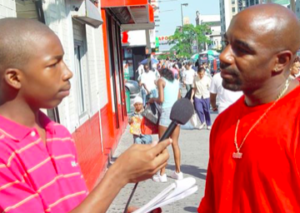 Having equipped budding journalists with the foundational skills, it’s equally important to give them real-world exposure. Immersion in actual scenarios can provide invaluable experience beyond any classroom setting. At HarlemLIVE, it was common for new trainees to transition from instruction to on-the-ground experience on their very first day. This approach wasn’t just about thrusting them into the thick of things but also aimed to nurture resilience, instill confidence, and facilitate hands-on learning.
Having equipped budding journalists with the foundational skills, it’s equally important to give them real-world exposure. Immersion in actual scenarios can provide invaluable experience beyond any classroom setting. At HarlemLIVE, it was common for new trainees to transition from instruction to on-the-ground experience on their very first day. This approach wasn’t just about thrusting them into the thick of things but also aimed to nurture resilience, instill confidence, and facilitate hands-on learning.
Guided by veteran HarlemLIVE youth reporters or adult volunteers, our young members ventured onto the vibrant streets of New York City using journalism not merely as a profession to master, but as a catalyst to help them discover their interests, develop their individual voices, and enhance their transferable skills for future endeavors.
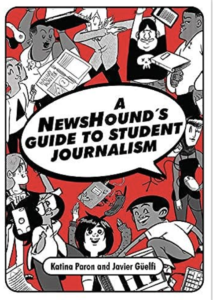 Essential Reading: Comprehensive Guides to Student Journalism
Essential Reading: Comprehensive Guides to Student Journalism
For those looking to delve deeper into the world of youth journalism and its many nuances, there are two particularly insightful books. Katina Paron and Javier Guelfi’s A Newshound’s Guide to Student Journalism (McFarland & Company, 2018) offers a vibrant exploration of the craft. The book is filled with reporting exercises and the essential principles of journalism creatively integrated into engaging narratives. Readers are also provided glimpses into the real-life events that inspired each tale.
Another invaluable resource is Jim Streisel’s High School Journalism: A Practical Guide (McFarland & Company, 2007). This book provides a wealth of information on various aspects of journalism, from identifying news and refining interviewing techniques to mastering the art of narrative writing and understanding the rights of student journalists. Streisel’s guide offers a comprehensive look into the world of high school journalism.
Both of these resources augment the foundational knowledge shared in this chapter and can serve as stepping stones for those keen to gain a deeper understanding of youth journalism.
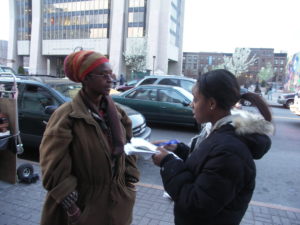
Essentials for Youth Journalism: Technique, Safety, and Ethics
While the basics are essential, the success of any youth journalism program hinges on the deeper intricacies of the craft. A thorough exploration of the following key topics is vital for the success of a youth journalism program.
• Technical Details: Learning about camera settings, doing thorough sound checks, and grasping light exposure adjustments. Also, improving badge designs, navigating multimedia platforms, and becoming skilled in different editing software can greatly boost the program.
• Safety Considerations: Ensuring the well-being of young journalists during their fieldwork.
• Ethical Considerations: Forming the backbone of responsible journalism, guiding how reporters approach their work.
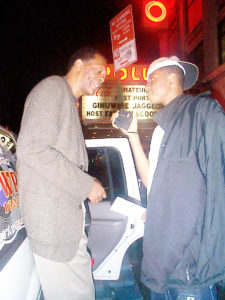 Chapter Insights & Online Resources for Youth Journalism
Chapter Insights & Online Resources for Youth Journalism
For a firsthand account of how we tackled these challenges, delve into Chapter 8, Building Blocks and Empowerment: How-to for HarlemLIVE. This chapter (in the book) offers a narrative-style exploration of HarlemLIVE’s distinct methods.
The internet is a vast treasure trove of resources, with platforms like YouTube and countless others offering comprehensive information on almost every topic discussed in this book. While this broad digital landscape is invaluable for budding youth journalists, our dedicated website, harlemlive.net, provides supplementary multimedia content that aligns with our HarlemLIVE narrative. However, the wider Web remains an indispensable resource, providing depth and breadth that cater to the ever-evolving needs of today’s young reporters.
With the proper tools, guidance, and plenty of online resources, creating a journalism program with youth can be a rich and rewarding experience for all.